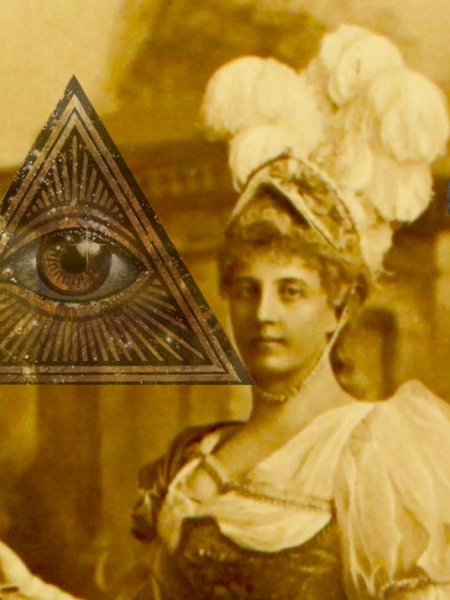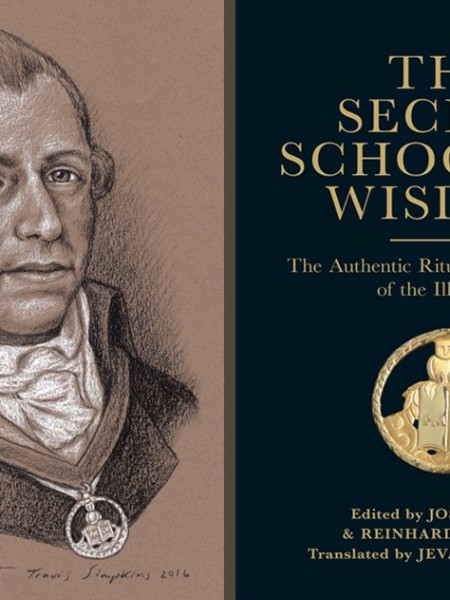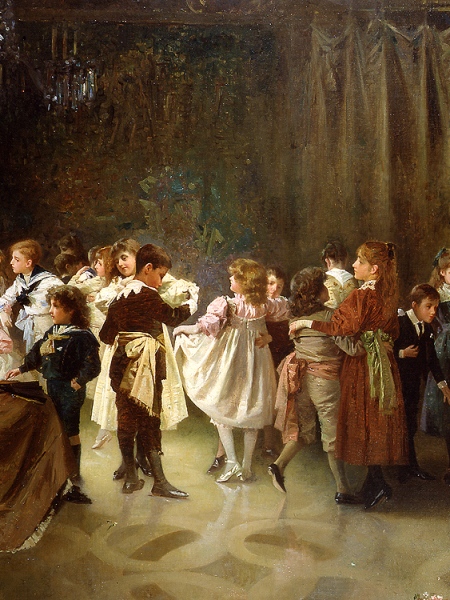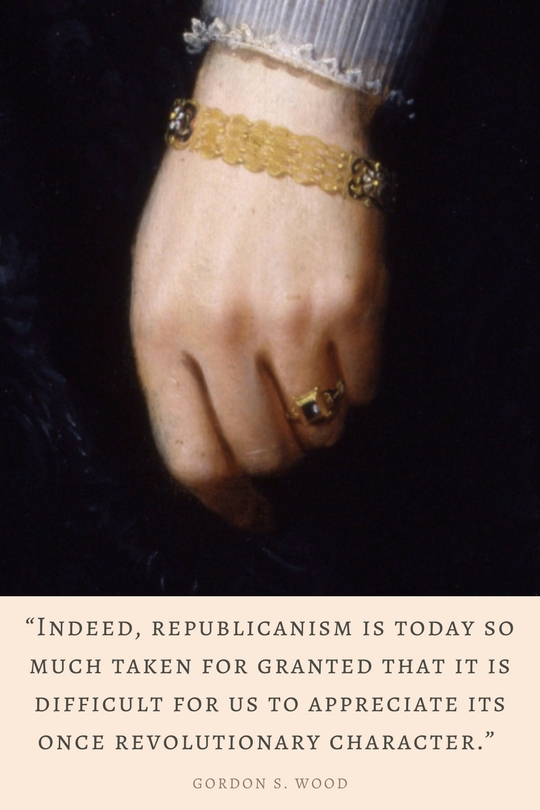The Spanish Alumbrados: Origin of the Term ‘Illuminati’
Illuminati. the past participle of illuminare, meaning to “light up,” or “illuminate.” The plural term, “Illuminati” (Lat. illuminatus; Ital. Illuminato) was originally applied to a 16 c. Spanish mystic sect, called the Alumbrados (Spanish. “Enlightened”), or Aluminados, led by Sister María de Santo Domingo, or La Beata de Piedrahita (a Spanish mystic c. 1485 – c. 1524).
This term later, under Illuminés, spread to France from Seville of Andalusia, Spain in 1623; and joined in a cause with the Guérinets under Pierre Guérin in 1634. Another little known group of Illuminés arose in south France, whom were called “French Prophets.” They were an off-shoot of the Camisards (French Protestant militants) of the Bas-Languedoc and Cévennes regions, from circa 1722-1794. The Alumbrados were first recorded in 1492 Spain, and had three edicts issued against them by the Catholic Inquisition.
Josef Wäges explains in his book, The Secret School of Wisdom, an early version of Knigge’s Preparatory Essay for potential recruits alludes to these condemned mystics (the Illumines of Spain persecuted by the Spanish inquisition), as the possible precursors of the Illuminati. He also states as said though, that there is no evidence that Weishaupt took any deeper interest in the history of the Alumbrados. The Alumbrados were mainly active in Castile and Andalusia.
Besides the similarity in name, we can establish that there is no historical or organizational link to the Illuminati of Ingolstadt, Bavaria (repressed in 1785) founded in 1776. Before the name ‘Illuminati’ was finally adopted in 1778, founder of the ‘Order,’ Adam Weishaupt initially began with his idea of a ‘School of Humanity.’ Discarding this idea, he drafted up a new secret society, and its members were to be called ‘Perfectibilists,’ “believers in the possible, constant improvement of human nature and society.”
Weishaupt contemplated on the name ‘bee order,’ or ‘bee society,’ an allusion to the Eleusinian mysteries, before adopting the name ‘Illuminati’ in 1778. Adam Weishaupt taught by Jesuits, though abhorring the Society of Jesus, closely examined its structure and constitutions; and thus utilized elements from Catholic religious orders, the Greek mysteries and Freemasonry to add to the sophistication in creating rules, titles and degrees, continuing to emphasize the idea of the Perfectibilist (improvement of self-knowledge and constant self-scrutiny of one’s own flaws).
Weishaupt emulated and valued the systems and philosophy of the ancient mysteries and arcane disciplines, and was inspired by his readings of the Avesta. He embodied the Enlightenment thinking of his time, and held deistic and republican ideals, fought for secular education in Bavaria, and defined ‘enlightenment’ and ‘illumination’ in the theosophical and secular, or “intellectual” and moral sense.
Helena P. Blavatsky’s Theosophical Glossary (published in 1892) references the term “Illuminati,” and defines it from Latin as a reference to the “Enlightened,” or the initiated adepts† (Lat. adeptus. “an expert”).
An illuminati describes a circle of Adepts and Magi, and cannot refer to a group of financiers, elite bureaucrats, and technocrats as in the distortions of popular culture and conspiracy theory. Hence, for example the Twelve Disciples of Christ in the New Testament may be technically called an Illuminati.
H.P. Blavatsky explains the term is of Avestan Zoroastrian origin, and a reference to magi — the Wise Men of Chaldea, India, Greece, Persia, Egypt and so forth. She referred to Confucius, Jesus and Siddhartha as composing a spiritual Illuminati, the Paracelsists as an Illuminati, and uses this term to also describe a clandestine network in her time in the Orient she refers to as the “real Rosicrucians.” The Theosophists explained, that this true hidden Illuminati, or body of initiates exists, and the ancient magical religion of the Chaldeans survives. Blavatsky explains, that “the word “Chaldean” does not refer merely to a native or an inhabitant of Chaldea, but to “Chaldeism,” the oldest science of astrology and occultism.”
For more information see Josef Wäges below who is working with others on a digital collection of Adam Weishaupt’s writings. See also Professor of History at UC Davis, Kathryn Olmsted.
Illuminati History of the Secret School of Wisdom | Josef Wages
Josef Wäges gives the death-blow to Illuminati conspiracies as strings of repeated hearsay devoid of historical fact. He goes into the references made by George Washington, a Freemason, who equated the Illuminati with the Jacobinism of the French Revolution. Illuminati History of the Secret School of Wisdom “THERE are lives that Theosophists and all others…
Zain Khan interviews Josef Wages on the Truth about the Bavarian Illuminati
Josef Wäges is making breakthroughs in historical research about the Bavarian Illuminati and Johann Adam Weishaupt. Zain Khan interviews Josef Wages a 32° degree Freemason, and also a best selling author of the book ‘The Secret School of Wisdom: The Authentic Ritual and Doctrines of the Illuminati.’
Buzz Feed Unsolved: The Secret Society of the Illuminati
The Secret History of the Illuminati Great points by Professor of History at UC Davis, Kathryn Olmsted. Thanks to BuzzFeedBlue, and their humor. Articles on MINVRA about the Illuminati The Practical Basis of Spiritual Illumination The Spanish Alumbrados: Origin of the term ‘Illuminati’ The Bavarian Illuminati, Weishaupt, and Illuminati Pop Lies Illuminati History of the Secret…
Illuminati Pop Lies vs. Secret Society Truth with Josef Wages
ABOUT JOHANN ADAM WEISHAUPT “It was the full conviction of this, and of what could be done, if every man were placed in the office for which he was fated by nature and a proper education, which first suggested to me the plan of Illumination.” — ADAM WEISHAUPT Johann Adam Weishaupt (1748-1830) was the founder…
Recommended Reading
- Alumbrado, Encyclopaedia Britannica, online.
- Camisard, Encyclopaedia Britannica, online.
- George Orwell, Politics and the English Language (1914).
















The term ‘Alumbrados’ was applied to them, similar to the way “illuminés” were applied to Pierre Guérin’s circle.
The Illuminatenorden (Order of the Illuminati) chose the name for themselves – for the first time.
LikeLiked by 1 person
Terry, thanks for your input. It was a very good name for an order to choose.
LikeLike
Thanks. It’s pretty clear, however, that naming it such was a mistake. Once they were suppressed and exposed, the authorities, conservatives and conspiracy theorists Barruel, Robison et al. immediately began to conflate them with the already established, so-called “Illumines” – Swedenborg, Saint-Martin, Mesmerism, Cagliostro, and Rosicrucians of every stripe – when in fact the Illuminatenorden were diametrically opposed to these movements and actively fought against them. The Golden and Rosy Cross, for example, were (in cooperation with Jesuits and clergy) THE instigators of the Illuminaten’s demise. It wasn’t made explicit in the contemporary accounts that this was the case, so the heirs to these movements themselves got caught up in the confusion and some subsequently claimed Weishaupt’s Order as being a part of the same esoteric tradition – viz. Crowley, OTO, Golden Dawn and a few Rosicrucian sects.
To this day the conflation continues. They should have stuck with Perfectibilists, which intimates their aim more clearly. The positivism of Comte is more akin to what Weishaupt was getting at.
LikeLiked by 1 person
I am smiling, because you know your research. I did include the issues between the spying German Rosicrucians and the Illuminati in the original article The Bavarian Illuminati, Weishaupt, and Illuminati Pop Lies here, but I think I deleted the section on it I wrote when I edited it. You’re definitely correct though. My research from this, is that the Illuminati were mediocre, and not that that is a bad thing, but they could not take flight, and flourish, and their ideas were mild in my view, analyzing the rest of the 18th century radicalisms springing up. It makes me hilarious chuckle and laugh, and at the same time frustrated by the idiocy spread about the Illuminati and the origin of the term, which I think H.P. Blavatsky claimed it had a Persian origin (a reference to the true Magi), if I could find that reference again.
I agree as well, and use the term Perfectibilists. This term, Perfectibilists gives the sound of a Western type of Confucianism, and it justly covers their aim, as you said. Thank you for your illuminating commentary for readers and myself.
LikeLike